
Age of the City: Why Our Future Will Be Won or Lost Together
by
Ian Goldin
and
Tom Lee-Devlin
Published 21 Jun 2023
While temple priests acted as the original authorities in early cities like Uruk, power eventually passed from priesthood to king.19 Uruk may have been the first city to develop in southern Mesopotamia, but a number of others, such as Ur, Kish and Lagash, soon emerged in the surrounding area. With agricultural surplus came the temptation of conquest and the imperative of defence. Security became an essential foundation for survival, with a more centralized model of power needed to mobilize citizens for defence and armed combat. The combination of an expansion in the agricultural surplus and a centralization of power over that surplus brought an end to the relative egalitarianism that had prevailed since the first days of hunting and gathering.20 A chieftain may have been able to command their tribe, but with very little food to go around there was limited scope for them to wield that power to achieve a vastly superior standard of living for themselves.
…
The influential theologian St Augustine presented the human story as a conflict between the iniquitous ‘City of Man’ and the heavenly ‘City of God’, observing that it was Cain, murderer of his brother Abel, who according to the biblical narrative founded the first human city.9 Later, Jean-Jacques Rousseau would declare cities to be ‘the abyss of the human species’,10 while Thomas Jefferson would dismiss them as ‘pestilential to the morals, the health and the liberties of man’.11 The essayist William Hazlitt feared that the city engendered ‘a puny, sickly, unwholesome, and degenerate race of beings’.12 Nevertheless, cities began to grow rapidly in size following the onset of the industrial revolution in Europe in the eighteenth century. A succession of advances in agriculture, from crop rotation to the mechanical reaper, created a much larger agricultural surplus in the countries where they were adopted. In Britain, the enclosure movement, under which lands that were previously communal and accessible to all were appropriated for private landowners, displaced a sizeable share of the rural population. At the same time, the adoption of new manufacturing technologies, including the spinning-jenny and steam engine, created enormous numbers of jobs in booming urban industries such as textiles and metalworks.
…
But in a developing country like Uganda that is experiencing rapid population growth, it is also possible for too little agricultural production to drive urbanization, as people seek to avoid starvation by moving to urban areas where they may be able to find a job. Food supply and trade is far more globalized today, which means that urbanization rates are no longer constrained by a country’s own agricultural surplus. There is considerable debate around why agricultural productivity has been slow to improve in many poor countries. One explanation lies in the development strategy known as ‘import substitution industrialization’ adopted in the decades immediately following the Second World War in a number of developing countries – most enthusiastically in Latin America, but also in South Asia and Sub-Saharan Africa.
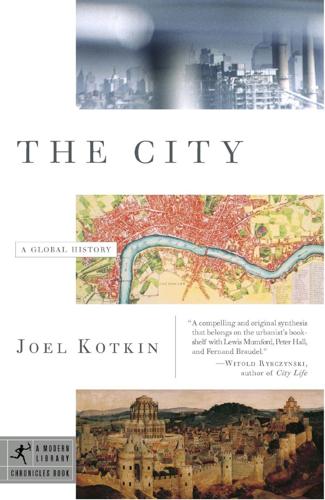
The City: A Global History
by
Joel Kotkin
Published 1 Jan 2005
It was here as well, by roughly 3500 B.C., that the first recognizable systems of writing emerged, for both religious and commercial reasons.13 The priesthood held powerful sway over the material world. They controlled, on the gods’ behalf, much of the land in the community. The “divine household” was in charge of maintaining the canals as well as the storage and distribution of the all-important agricultural surplus. The Epic of Gilgamesh, the origins of which go back to Sumerian times, speaks of the “sacred storehouse” that is the “seat of Ishtar, the Goddess.”14 The temple also served as the first urban “shopping center,” offering in an open setting a vast array of goods ranging from oils and fats to reeds, asphalt, mats, and stones.
…
Babylon, the greatest of the Mesopotamian cities, was called Babi-ilani, or “the Gate of the Gods,” the place from which the divinities were believed to have descended to earth.16 EGYPT It is not clear whether or not Mesopotamia directly shaped the early Egyptian civilization, but the latter may well have been, as the historian Grahame Clark has noted, “fertilized from Sumerian seeds.”17 As in the early Mesopotamian cities, the first Egyptian conurbations rested economically on the critical agricultural surplus. The average Egpytian peasant produced, according to some estimates, three times as much food as he needed.18 But there were also many differences between these two early civilizations. In Egypt, control lay in the hands of the pharaoh, who claimed to be a god himself. The civil servants, rather than administering the irrigation and surplus economy for the benefit of the gods or a king, did so for an individual personifying both at the same time.19 The intimate relationship between the civic identity and the priesthood, so critical in the evolution of Mesopotamian cities, was not nearly as pronounced.
…
Among the first was Cincinnati, located on a bend in the Ohio River, which grew from a tiny frontier settlement of barely 750 residents in 1800 to a booming city of more than 100,000 forty years later. Cincinnati and other midwestern cities proved ideally suited for manufacturing growth. The region’s huge agriculture surplus created an opportunity for mass production of animal products on a hitherto unimagined scale. Soon dubbed “Porkopolis,” Cincinnati boasted vast slaughterhouses that dropped “rivers of blood” into Deer Creek and from there into the Ohio. Other cities enjoyed similarly rapid growth.31 St. Louis, home to a few hundred hardy souls at the opening of the nineteenth century, was by century’s end a mature metropolis of half a million.

The Locavore's Dilemma
by
Pierre Desrochers
and
Hiroko Shimizu
Published 29 May 2012
The Finnish government then had no choice but to quietly purchase two-thirds of the country’s yearly wheat supply on world markets (and for only half the price they would have had to pay their own farmers).55 Another problem is that reliance on long distance trade only proved a less desirable alternative than autarky in the context of prolonged blockades and stationary fronts. In the context of aerial bombing, however, the destruction of critical local infrastructure would soon cripple locavore communities with no capacity to tap into the agricultural surplus of more distant regions. Autarkic policies also always mandate the use of more marginal agricultural lands whose long-term productivity is more likely to be affected by erosion and other problems. Finally, post-war reconstruction is much easier when distant resources can be accessed. While future world conflicts are always possible, distant and hopefully remote possibilities should not be invoked to maintain hundreds of millions of people in a state of hunger and malnutrition in the present time.
…
Second, singular weather events and climate change will not stop even if humans drastically reduce their carbon dioxide emissions. As in the past, crop failures caused by hailstorms, floods, droughts, and other weather-related events will cause much harm to communities that cannot tap into the agricultural surplus of more distant regions that have enjoyed better growing conditions. Last but not least, as the agricultural economist Dennis Avery observes, wheat, rice, and corn are all originally warm weather plants that, through thousands of years of modifications, are now able to withstand a wide range of conditions.

An Edible History of Humanity
by
Tom Standage
Published 30 Jun 2009
But a village in which some inhabitants manage to accumulate more food and trinkets than others is still a far cry from the elaborate social hierarchies of the first cities, in which the ruling elites appropriated the surplus by right and then distributed the portion of it they did not consume themselves. How did these powerful leaders emerge, and how did they end up in control of the agricultural surplus? An important step along the road from an egalitarian village to a stratified city seems to be the emergence of “big men” who win control of the flow of surplus food and other goods and so amass a group of dependents or followers. Perhaps surprisingly, the big man’s means of persuasion is not the threat of violence, but his abundant generosity.
…
FOOD AS CURRENCY Food was used within early civilizations as a form of currency, in barter transactions, and to pay wages and taxes. Food was passed upward from the farmers to the ruling elite in various ways and then redistributed as wages and rations to support the elite’s activities: building, administration, warfare, and so on. The principle that some or all of the agricultural surplus had to be handed over is common to all early civilizations, since the appropriation of the surplus had been central to their emergence in the first place. There were many different schemes. But in each case the structure of society—who people worked for, where their sustenance came from, and where their loyalties lay—was defined by food.
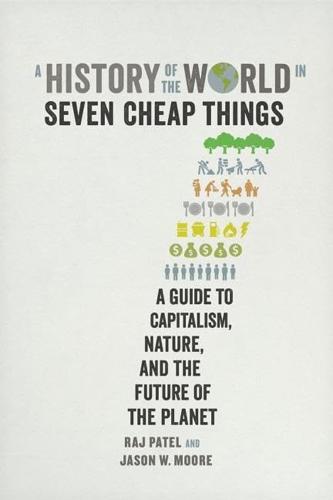
A History of the World in Seven Cheap Things: A Guide to Capitalism, Nature, and the Future of the Planet
by
Raj Patel
and
Jason W. Moore
Published 16 Oct 2017
Cultivation spread northward and upward: vineyards sprouted in southern Norway, and grain farms climbed mountains and highlands from the Alps to Scotland.24 Human numbers in Europe swelled, nearly tripling—to seventy million—in the five centuries after 800.25 England’s population peaked around 1300 and wouldn’t reach that level again until the end of the seventeenth century.26 The agricultural surplus grew even faster. Towns sprang up everywhere, and by 1300 a growing share of the population—perhaps a fifth—worked outside agriculture. Such relative prosperity also fueled expansionary appetites. The Crusades are an example: highly commercialized and militarized operations that targeted the wealth of the eastern Mediterranean, beginning in 1095.
…
The proportion of city dwellers had doubled over the previous century.10 The enclosures of the previous two centuries had made agriculture a competitive business, and a cluster of innovations—new ploughs, crop rotations, and drainage systems especially—had made it biologically productive. While historians debate the precise timing of its agricultural revolution, it’s clear that by 1700 England was doing the two big things that every great capitalist power must: increasing the agricultural surplus and expelling labor from the farm.11 It could expel labor from the farm because it was productive in a new sense: labor productivity advanced rapidly, rising nearly 46 percent between 1500 and 1700.12 English agriculture was so robust at the dawn of the eighteenth century that it was able to rescue a rapidly proletarianizing Europe from hunger.

The Einstein of Money: The Life and Timeless Financial Wisdom of Benjamin Graham
by
Joe Carlen
Published 14 Apr 2012
Regardless of one's opinion of his ideas (with respect to investment finance, macroeconomics, or any other issue on which he posited a novel/alternate hypothesis), Graham's views were almost always thoroughly researched and well presented. A tour de force of agricultural and monetary history and policy, Storage and Stability is no exception. Graham commences with the vexing problem of agricultural surplus and the absurd “solutions” to the problem that a poorly conceived monetary system has led to: “That surplus stocks of goods have played an overshadowing part in the depression of the 1930s can scarcely be gainsaid. The point was brought home in a spectacular manner by the government-sponsored plowing under of cotton and slaughter of pigs in 1933.”32 Graham then explains that such gross inefficiency is a direct consequence of paper money's near-complete divorce from tangible items of direct relevance to human welfare: “Wealth, in short, became not so much the actual ownership of things as the ability to purchase them.”33 THE HISTORICAL BASIS OF STORAGE Charles Brandes, Graham's preeminent West Coast disciple, told me something very insightful about his mentor's outlook on the world: “I think that this knowledge of his history gave him the perspective of eternity, which can be a great advantage in investing.”34 Not only did his historical knowledge help shape his approach to investing but, as evidenced by Graham's reflections on various other topics in his memoirs (theology, friendship, and so forth), the rare breadth and depth of his historical understanding informed his view on every aspect of life to which he turned his attention.
…
Graham believed that such restrictions on agricultural (and other raw-materials) production “can be defended neither by theory, by practical result, nor by the law of necessity.”41 He believed that a government-run system of storing surplus production in a reserve was far more efficient and conducive to long-term economic well-being than the destruction and distortions wrought by production restrictions. In a fascinating series of historical (and quasi-historical) examples, Graham makes a convincing case that “throughout the ages prior to the twentieth century the primary concern of the State with agricultural surplus was first to promote it, and secondly to conserve it for later needs by storage.”42 Going as far back as the biblical account of Joseph storing provisions in advance of Egypt's famine and the well-documented storage systems employed by the Peruvian Incas and ancient Chinese, all the way through the practices of the dominant European nations of the sixteenth through the nineteenth centuries, Graham provides ample historical precedent for his thesis.
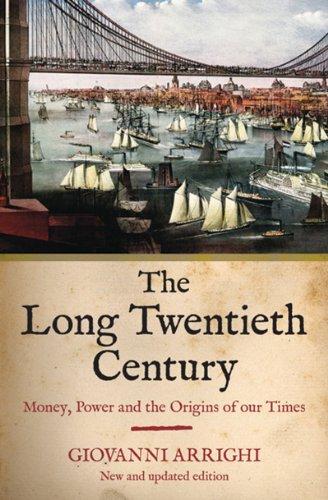
The Long Twentieth Century: Money, Power, and the Origins of Our Times
by
Giovanni Arrighi
Published 15 Mar 2010
Although industries producing for the highly protected and rapidly expanding domestic market became the main loci of capital accumulation in the United States, the continuing expansion of this market depended critically on the sale abroad of a large and growing agricultural surplus: By 1870 the American economy depended so much upon foreign markets for the agricultural surplus that the ups and downs for the next thirty years can be traced to the success or failure of marketing each year’s wheat and cotton crop. No matter how many markets could be found, more always seemed to be needed. (LaFeber 1963: 9-10; see also Williams 1969: 201) THE LONG TWENTIETH CENTURY 301 On the eve of the Great Depression of 1873-96 the relationship of the US domestic economy to the British world market system was thus somewhat analogous to that of the German domestic economy, because German economic expansion also had hitherto depended critically on the export of its agricultural surplus.
…
(LaFeber 1963: 9-10; see also Williams 1969: 201) THE LONG TWENTIETH CENTURY 301 On the eve of the Great Depression of 1873-96 the relationship of the US domestic economy to the British world market system was thus somewhat analogous to that of the German domestic economy, because German economic expansion also had hitherto depended critically on the export of its agricultural surplus. And yet, during the Great Depression the two relationships began to diverge radically. For the US state enclosed an economic space that was not only much larger and more diversified, but also far more malleable than the economic space enclosed by Imperial Germany — a space, that is, that could be depopulated and repopulated to suit the requirements of high-tech agricultural production more easily than the smaller and more densely populated German economic space could.

How Asia Works
by
Joe Studwell
Published 1 Jul 2013
But states with good policies will find globally competitive niches that allow farmer incomes to continue to rise as labour leaves the countryside This involves a move away from agricultural protection and guaranteed minimum farm prices. From a global development perspective, reduced protection in already-developed countries also gives other poor countries in turn the opportunity, in turn, to export their agricultural surplus in the period when their labour is cheapest; it keeps the developmental drawbridge down. Unfortunately, in north-east Asia, governments in Japan, Korea and, to a lesser extent, Taiwan failed to make the transition to larger farms, greater specialisation and reduced protectionism. They gradually eased legal restrictions on the leasing and sale of agricultural land to allow consolidation of farms.
…
But history shows that markets – with the primordial exception of what the institutional economist Ronald Coase dismissed as ‘individuals exchanging nuts for berries on the edge of the forest’ – are created.1 Which is to say that in a functioning society markets are shaped and re-shaped by political power. Without the dispossession of landlords in Japan, Korea, Taiwan and China there would have been no increased agricultural surplus to prime industrialisation. Without the focus on manufacturing for export, there would have been no way to engage tens of millions of former farmers in the modern economy. And without financial repression, it would not have been possible to pay for an accelerated economic learning process.

The Dawn of Everything: A New History of Humanity
by
David Graeber
and
David Wengrow
Published 18 Oct 2021
It was time to grow up and appoint some proper leadership. Hierarchies began to emerge. There was no point in resisting, since hierarchy – according to Diamond and Fukuyama – is inevitable once humans adopt large, complex forms of organization. Even when the new leaders began acting badly – creaming off agricultural surplus to promote their flunkies and relatives, making status permanent and hereditary, collecting trophy skulls and harems of slave-girls, or tearing out rivals’ hearts with obsidian knives – there could be no going back. Before long, chiefs had managed to convince others they should be referred to as ‘kings’, even ‘emperors’.
…
Certain salient features of current arrangements are just projected backwards, presumed to exist once society has attained a certain degree of complexity – unless definitive evidence of their absence can be produced. For example, it is often simply assumed that states begin when certain key functions of government – military, administrative and judicial – pass into the hands of full-time specialists. This makes sense if you accept the narrative that an agricultural surplus ‘freed up’ a significant portion of the population from the onerous responsibility of securing adequate amounts of food: a story that suggests the beginning of a process that would lead to our current global division of labour. Early states might have used this surplus largely to support full-time bureaucrats, priests, soldiers and the like, but – we are always reminded – its existence also allowed for full-time sculptors, poets and astronomers.
…
They seem to have got on with them well enough, since there is little evidence for warfare or organized violence of any sort.18 But they never came together to create any sort of ongoing village or town life.19 Monumental architecture on the scale of the Hopewell earthworks is generally assumed to imply a significant agricultural surplus, governed by chiefs or a stratum of religious leaders. Yet this isn’t what was going on. Rather we find just the sort of ‘play farming’ familiar from our discussions in Chapter Six, as well as shamans and engineers who spent the overwhelming majority of their time with the same five or six companions, but who periodically walked out on to the stage of an extended society that encompassed much of the North American continent.

A Pipeline Runs Through It: The Story of Oil From Ancient Times to the First World War
by
Keith Fisher
Published 3 Aug 2022
John Dickinson, the chief drafter of the Articles of Confederation, now recommended that unless the Indians give up all of this land peacefully, ‘we will instantly turn upon them our armies that have conquered the king of Great Britain … and extirpate them from the Land where they were born and now live’.63 George Washington predicted that even without further military action, ‘the gradual extension of our Settlements will as certainly cause the Savage as the Wolf to retire; both being beasts of prey tho’ they differ in shape’.64 ‘TRADE OF A RISING EMPIRE’ Now that the newly independent American ruling class had opened the western frontier to its land speculations, it inherited the very problem that had ultimately defeated its British predecessors: how to keep the westward-expanding empire under its control. Settlers in the Midwest beyond the Appalachians were exporting agricultural surplus southwards down the Mississippi to Spanish New Orleans; those in the Northwest Territory (later known as the Old Northwest) and around the Great Lakes were trading through British Canada. Might westerners turn away, economically and then politically, from their East Coast masters?65 The solution seemed to be to tie east and west together into economic interdependency through trade.
…
Comparing the navigation works required to those of the Canal du Midi, he informed the house, It has been observed by all who are concerned in the Indian trade, that the great inconvenience and delay, together with the expense attending the transport of goods at the carrying places, have considerably diminished the profits of the trader, and called for the aid of the Legislature, which, if not timely exerted in their behalf, the commerce with the interior parts of the country may be diverted into such channels as to deprive this colony every advantage which could arise from it … [I] recommend … the improvement of our inland navigation, as a matter of the greatest consequence to the province.71 Now, post-independence, ambitious plans were afoot to open up these portages and construct a vast system of inland water transport. It was predicted that by linking the Hudson and Mohawk rivers with the sprawling inland waterways of the Great Lakes region, New York City could profit from exporting the agricultural surplus of the huge expanse of the trans-Appalachian and Allegheny Midwest as well as that from central and western New York State. In 1788 Elkanah Watson, an ambitious land speculator who made it his business to fraternize with the rich and powerful, and who would become a leading promoter for an Erie Canal system, saw the commercial possibilities: In contemplating the situation of Fort Stanwix, at the head of batteaux navigation on the Mohawk river, within one mile of Wood Creek, running west, I am led to think this situation will, in time, become the emporium of commerce between Albany and the vast western world above … By [navigation improvements], the state of New York have it within their power, by a grand stroke of policy, to divert the future trade of Lake Ontario and the great lakes above, from Alexandria and Quebec, to Albany and New-York.72 The remaining New York Iroquois stood no chance against the powerful private land companies, whose members held high office in state and federal assemblies that, in turn, were desperate for revenue from land sales due to post-war bankruptcy and to mutiny from their unpaid war veterans.
…
For the opening ceremony, New York’s dignitaries travelled from Lake Erie to the Atlantic on a flotilla of boats – led, perversely, by one named Seneca Chief.116 Meanwhile, the actual Seneca Chief, Cornplanter, was marooned at Burnt House, a small tract of land on the Allegheny River, where he resided until his eventual death in 1836.117 THE $300,000 QUESTION Now great quantities of agricultural surplus, timber and commodities from the west could be cheaply transported, traded and exported. Increasing trade stimulated further transport development in roads, canals and then railways that, with state and federal support, attracted large sums of European investment through merchant banks such as N.M.
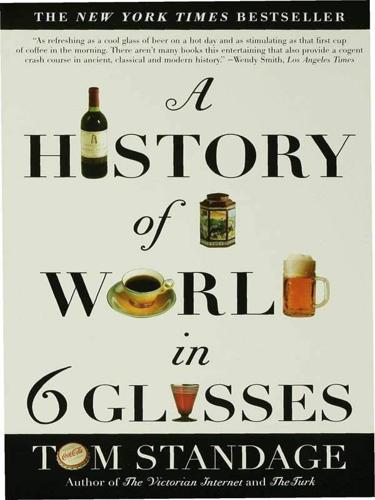
A History of the World in 6 Glasses
by
Tom Standage
Published 1 Jan 2005
These two earliest examples of civilization—a word that simply means "living in cities"—were different in many ways. Political unification enabled Egyptian culture to endure almost unchanged for nearly three thousand years, for example, while Mesopotamia was the scene of constant political and military upheaval. But in one vital respect they were similar: Both cultures were made possible by an agricultural surplus, in particular an excess of grain. This surplus not only freed a small elite of administrators and craftsmen from the need to produce their own food but also funded vast public works such as canals, temples, and pyramids. As well as being the logical medium of exchange, grain was the basis of the national diet in both Egypt and Mesopotamia.

They Have a Word for It A Lighthearted Lexicon of Untranslatable Words & Phrases-Sarabande Books (2000)
by
Howard Rheingold
Published 10 Mar 2020
[noun] Some paleontologists assert that technical and occupational specialization is as old as the human species, but that it did not truly thrive until the birth of civilization: In order to irri- THEY HAVE A WORD FOR IT gate the fields of the first agricultural communities in the Fertile Crescent, work crews (and overseers) were needed to dig ditches. Then, when the agricultural surplus allowed people to do something else besides scratching the ground and scouring the countryside for enough to eat, came the first building projects: ziggurats, pyramids, monoliths. That's where the stonemasons, architects, tax collectors, accountants, overseers, and laborers truly started specializing.
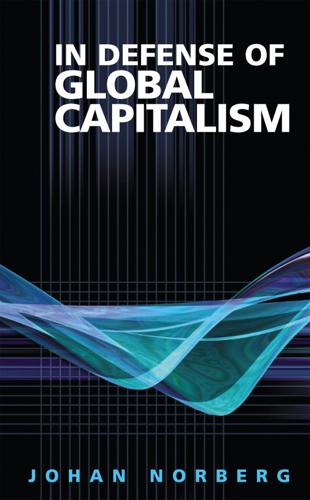
In Defense of Global Capitalism
by
Johan Norberg
Published 1 Jan 2001
African economies have been governed by price and exchange controls, and public expenditure has at times run riot. The urban elites have systematically exploited the countryside. Instead of creating markets, countries established purchasing monopolies that paid wretched prices and introduced government distribution of food. The government thereby confiscated the entire agricultural surplus, impoverishing the farmers and effectively abolishing trade. Production fell and farmers were driven into the informal market. That impeded plans for industrialization and posed a threat to society when the economic downturn set in during the 1970s. After trying to borrow their way out of the crisis, many African states were in free fall by the mid1980s.

The Great Leveler: Violence and the History of Inequality From the Stone Age to the Twenty-First Century
by
Walter Scheidel
Published 17 Jan 2017
Mercantile elites’ prior inability to secure gains from international trade may have been one reason for this. Moreover, as agricultural productivity improved and the nonagricultural sector expanded during isolation, the fact that taxes were set based on fixed assumptions about output prevented the “300 lords” who held large domains from capturing the expanding agricultural surplus, causing their share in overall revenues to fall. It took Japan’s opening to the global economy and its subsequent industrialization to push inequality to ever higher levels.35 Figure 3.5Inequality trends in the United States in the long run All in all, national trends during the century leading up to the period of the world wars are about as clear as we can expect them to be for a period that produced what by current standards must count as relatively modest amounts of data of often limited quality and consistency.
…
As a result, elite landownership expanded at the expense of the state, and attempts to implement land equalization schemes ceased after political instability commenced in the mid-eighth century CE. The growth of large estates sheltered peasants from state taxation, allowing landlords to convert the agricultural surplus into private rent. Linked to long-distance trade, these commercialized estates helped sustain an increasingly rich elite. Those who disposed of sufficient capital to run mills diverted water from peasants, a practice that prompted complaints but only sporadic state intervention. An eighth-century observer who claimed that the nobles, officials, and powerful local families set up their estates one next to the other, swallowing up peasants’ land as they please without fear of the regulations. . . .
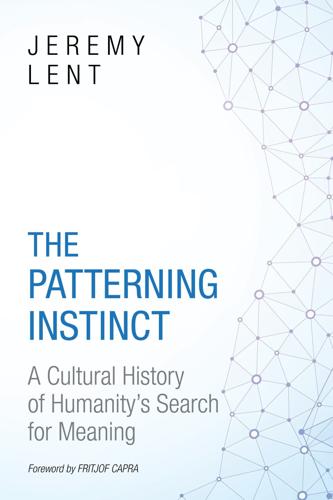
The Patterning Instinct: A Cultural History of Humanity's Search for Meaning
by
Jeremy Lent
Published 22 May 2017
Even the rivers refused to cooperate like the Nile: in late summer, when newly planted crops needed the most water, they were at their lowest levels. So how did this barren region become the incubator of the world's first great civilization? In one word: irrigation. By digging an increasingly elaborate system of canals, the early inhabitants of the region were able not only to sustain themselves but to create an agricultural surplus that permitted them to trade for the raw materials they lacked—and eventually develop the most complex society the world had ever seen.27 Mesopotamian civilization lasted for an impressive three thousand years, but the political history of the region was characterized by incessant instability and plagued by warfare and invasions, leading to the rise and fall of a series of different empires.
…
“With continuation of this trend,” Tainter concludes, “collapse becomes a matter of mathematical probability, as over time an insurmountable stress surge becomes increasingly likely.”19 The Roman Empire presents the best documented—and dramatic—example of Tainter's model. Tainter tells how, as it expanded, Rome would conquer new territories and appropriate the spoils, in the form of agricultural surplus, treasure, and slaves, causing an infusion of wealth. However, after each conquest, the Empire incurred new costs to administer, garrison, and defend the province. How did they pay for this? By conquering another territory for another one-time wealth infusion. By the first century CE, the Roman Empire had expanded so far that maintaining it was draining Rome's wealth, while new territories were becoming increasingly difficult to conquer.
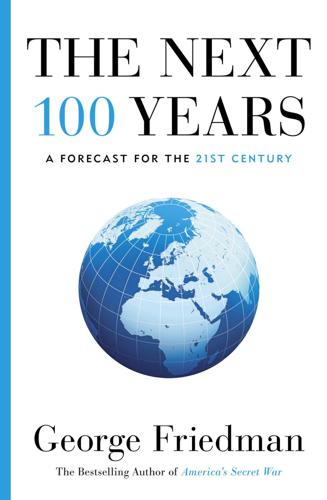
The Next 100 Years: A Forecast for the 21st Century
by
George Friedman
Published 30 Jul 2008
It not only had to unite but had to spread into the vast territory between the Alleghenies and the Rocky Mountains. This gave the United States not only strategic depth but also some of the richest agricultural land in the world. Even more important, it was land with a superb system of navigable rivers that allowed the country's agricultural surplus to be shipped to world markets, creating a class of businessmen-farmers that is unique in history. The Louisiana Purchase of 1803 gave the United States title to this land. But it was the Battle of New Orleans in 1814, in which Andrew Jackson defeated the British, that gave the nation real control of the region, since New Orleans was the single choke point of the entire river system.

Rethinking the Economics of Land and Housing
by
Josh Ryan-Collins
,
Toby Lloyd
and
Laurie Macfarlane
Published 28 Feb 2017
A harmonious society would be one where the state should not interfere with the operation of ‘natural’ economic laws but rather complement such laws. They studied and lived in predominantly agrarian societies and attacked the other main school of economic thought, mercantilism, for its focus on trade and exchange, instead arguing that the source of true value and profit lay in the agricultural surplus. Seeing land as the source of all surplus, they proposed that the French government should obtain all of its revenue by taxing land, rather than by taxing trade and industry, which shrank when taxed. The classical political economists that shaped the birth of modern economics gave more weight to labour and capital but equally considered land to be the most appropriate source of taxation. 3.2 Classical political economy: land and economic rent All of the classical economists, including Marx, Smith, David Ricardo and John Stuart Mill, viewed land as a vital factor of production.
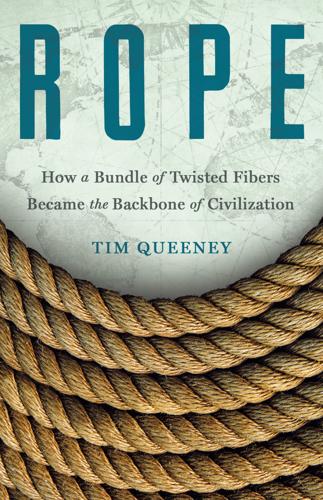
Rope: How a Bundle of Twisted Fibers Became the Backbone of Civilization
by
Tim Queeney
Published 11 Aug 2025
The ropewalks in Boston supplied rope to the growing merchant fleet of colonially built ships. By as early as 1650 Boston was in the driver’s seat as the number one port and was heavily engaged in international trade. “Boston was the leading port.… New England-built vessels were then carrying agricultural surplus, horses, cattle, and furs to Europe and the Caribbean, and to those places … they brought lumber, wooden ware, casks, staves, and hoops of New England pine and oak.”10 Hemp composed the majority of raw material for making rope and for sailcloth for ships, and the government in London was keen to have a local supply of hemp fiber.

The Empathic Civilization: The Race to Global Consciousness in a World in Crisis
by
Jeremy Rifkin
Published 31 Dec 2009
SEVEN COSMOPOLITAN ROME AND THE RISE OF URBAN CHRISTIANITY THE ROMAN EMPIRE represents the “high watermark” for ancient hydraulic civilizations. Although Rome was situated at the divide between the East and the West, and was therefore on the periphery of the hydraulic world, the Imperium Romanum occupied and administered much of the hydraulic areas of the Mediterranean and Middle East and relied on the bounty of their agricultural surplus to provide a substantial proportion of the grain to feed Roman citizens as well as its slaves and men under arms.1 Equally important, Roman rulers borrowed much of the administrative knowledge and governing expertise of the great hydraulic civilizations to the east to fashion their own despotic rule.
…
New York: Three Rivers Press, 2006. INDEX Abercrombie. J., Dr. Abraham Abrahamic religions actual self Adams, Robert M. Adler, Alfred adolescent advertising industry Affective Neuroscience (Panksepp) afferent feedback Age of Faith Age of Reason Age of Sentimentalism aggression agricultural surplus agriculture feudal hydraulic societies industrial late Middle Ages Roman Empire Sumeria Ainsworth, Mary Akhenaten Akkadians Alcoholics Anonymous aliens (the other) Allen, Myles Allen, Steve Allen, Woody altruism Amazon rain forest Ambrose of Milan American culture American Dream American Idol American Indian American Literature American Psychologist American Revolution Anderson, David Animal Electricity (du Bois-Reymond) Animal Planet animal protection animal rights movement animal species fairness and gestures and language grooming behavior learned behavior play and sense of humor sensory apparatus of social nature Annan, Kofi anomie anosognosia anterior cingulate cortex anthrax anxious attachment Aquinas, Thomas, Saint Arbib, Michael archaic man Archer, Brian architecture Arecibo Observatory (Puerto Rico) Aristotle Armstrong, Karen Armstrong, Nancy Arsenio, William F.
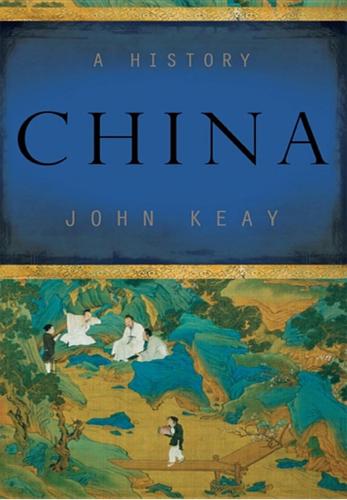
China: A History
by
John Keay
Published 5 Oct 2009
This was especially so in Sui China, where roads were subject to annual inundation and coastal shipping was deemed precarious. Yet coinage being scarce and paper money still to be invented, the entire tax yield came in kind – usually grain and silk – and so in bulk. Moreover, the movement and storage of this agricultural surplus was the only insurance against the ever-present threat of famine and was a strategic necessity for provisioning frontier garrisons and supporting military ventures beyond. The Grand Canal, linking the Yangzi region with its rice surplus to the heavily populated and famine-prone northern plains, thus had a similar effect to the first transcontinental railroads in North America.
…
But under a weakened administration, when senior positions and fiefdoms were doled out as favours and could become hereditary, and when local disturbances demanded a prompt local response, provincial administrations would have no compunction about taking independent action. Containing the two imperial capitals (Dadu and Shangdu), acting as a conduit to the Mongolian fatherland and yet boasting no agricultural surplus, the metropolitan area undoubtedly required special consideration. Yuan attempts to increase agricultural production were concentrated there and may have had some effect. But the region remained heavily dependent on rice imports from the south via a canal system badly disrupted by the flood-prone Yellow River.

The Knowledge: How to Rebuild Our World From Scratch
by
Lewis Dartnell
Published 15 Apr 2014
A productive agricultural system enables one person to feed several others, who are then free to specialize in other crafts and trades.* If your brawn is not demanded in the fields, your brain and hands can be put to other uses. A society can economically develop and grow in complexity and capability only once this basic prerequisite has been met—agricultural surplus is the fundamental engine for driving the advancement of civilization. But the benefits of productive agriculture for a rapid reboot of civilization after the apocalypse can be realized only if the excess food can be stored reliably and doesn’t rot away uneaten: we’ll now turn to food preservation.

Inglorious Empire: What the British Did to India
by
Shashi Tharoor
Published 1 Feb 2018
Gurcharan Das, who is inclined to give the British the benefit of the doubt, also does not see deliberate malice in their policy, but his review of the reasons for the industrial failure of British India amount in fact to a devastating summary of what British colonial rule had done to the economy: The industrial revolution did not occur because [first], Indian agriculture remained stagnant, and you cannot have an industrial revolution without an agricultural surplus or the means to feed a rapidly growing urban population; second, the international trading environment turned hostile with protectionism after World War I, followed by the Depression; third, the colonial government did not educate the masses, unlike the Japanese state; finally, a colonial mindset pervaded the Indian middle class—even the hardiest potential entrepreneur lacks confidence when he is politically enslaved.

Whole Earth Discipline: An Ecopragmatist Manifesto
by
Stewart Brand
Published 15 Mar 2009
The most productive city is one with many cultures, many languages, many neighborhoods, and more kinds of urban experience available than any citizen can keep track of. In this formulation, it is the throwing together of great wealth and great poverty in the urban stew that is part of the cure for poverty. The common theory of the origin of cities states that they resulted from the invention of agriculture: Surplus food freed people to become specialists. You can’t have full-time cobblers, blacksmiths, and bureaucrats, the theory goes, without farms to feed them. Jane Jacobs upended that supposition in The Economy of Cities (1969). “Rural economies, including agricultural work,” she wrote, “are directly built upon city economies and city work.”
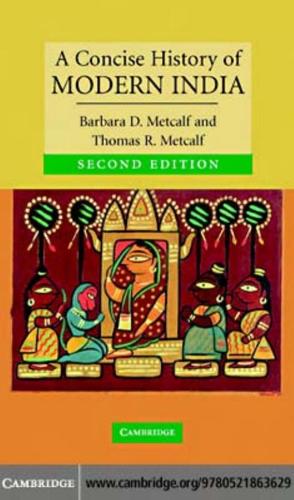
A Concise History of Modern India (Cambridge Concise Histories)
by
Barbara D. Metcalf
and
Thomas R. Metcalf
Published 27 Sep 2006
One immediate corrective to much scholarship is to emphasize how much their kingdom had in common with other Indic polities of the day. Like these other states, including that of the celebrated Rajput Prithviraj Chauhan, the Turks and Afghans sought above all military successes in order to secure access to the agricultural surplus of the countryside. Like them, they possessed a fragmented political authority, with rights to a share of the land revenue of a specific area assigned to their subordinates as a form of compensation. Also like them, the Delhi Sultans offered scope to individual achievement, above all through military prowess.
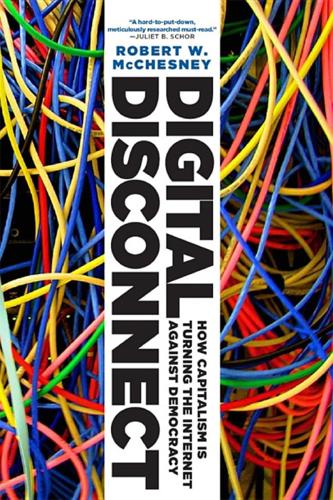
Digital Disconnect: How Capitalism Is Turning the Internet Against Democracy
by
Robert W. McChesney
Published 5 Mar 2013
No wonder Jared Diamond has written that for the quality of life of much of humanity, agriculture arguably was a significant step in the wrong direction.5 Ironically, it was the price of civilization. Markets existed in these precapitalist societies to varying degrees. They tended to be for lending or for merchants, and they were peripheral. The bulk of the surplus remained tied to agriculture. Surplus was generated to be consumed, and there was no particular incentive to increase its size. Capitalism emerged between 1500 and 1850 in a transition from feudalism through mercantilism to full-throttle industrial capitalism, marked by a radical transformation: surplus became something different from the amount society produced above the necessities of survival.

The Making of an Atlantic Ruling Class
by
Kees Van der Pijl
Published 2 Jun 2014
The textile capitalist and head of Confindustria, the employers’ organization, A. de Micheli, typically saw the expansion of Italian capital in the perspective of a joint operation with American capital, with both economies supplying their excess assets. Rather than channelling Italian labour reserves into domestic industry, De Micheli proposed that the agricultural surplus population of Italy should be sent to Africa, followed by Italian and American capital: ‘For as US and Italian capital flows into Africa it will bind that continent solidly into the Western alliance’.93 Another stronghold of Atlantic liberalism was the private steel firm, Falck. B. Falck in a Fortune survey of Italian business opinion advocated that the ‘nations of the West (should) extend the rule of liberty from the internal political field to the external international order’.

Water: A Biography
by
Giulio Boccaletti
Published 13 Sep 2021
States with limited water resources, and therefore without surplus capacity, were also able to share in this wealth by sourcing metals or other raw materials, or producing sought-after artifacts. States in this commercial network pursued specialization of labor and land, determined by each society’s comparative advantage, partly defined by rainfall. If trade was predicated on the ability of some countries to generate agricultural surplus, it stands to reason that such trade could also be vulnerable to long-term changes in water conditions. Less rain in one corner of the commercial network would decrease crop production. Without adequate storage, this would lead to the collapse of economic activity, which would then propagate through the network, affecting distant places.

Open: The Story of Human Progress
by
Johan Norberg
Published 14 Sep 2020
Archaeologist David Wengrow even talks about the first city as ‘the first global village’ because it was dependent on innovations in an area extending from the Cilician Gates, overlooking the Mediterranean, to the Gulf of Oman on the Arabian Sea.35 The first settled civilizations were dependent on the regular exchange of agricultural surplus for timber, metals, granite and marble from Syria and Anatolia, and later the Persian Gulf and western India. In fact, it might be that one incentive to invent productive, specialized agriculture was to create a surplus to exchange for the resources they needed (and wanted). Trade encourages economies of scale, where even small villages and countries can specialize in production that is too large for the domestic market.

The Cigarette: A Political History
by
Sarah Milov
Published 1 Oct 2019
And, in fact, they were producing more than ever. In general, federal efforts to control agricultural production faltered as farmers’ productivity skyrocketed, juiced by the liberal application of fertilizers and pesticides.5 But for farmers—and especially for partisans of high government supports for agriculture—surplus commodities did not reflect a problem of overproduction. They represented a problem of underconsumption. Throughout the 1950s, foreign markets were seen as a way to expand demand for U.S. agricultural products—tobacco foremost among them—while simultaneously maintaining the solvency of U.S. price support programs.
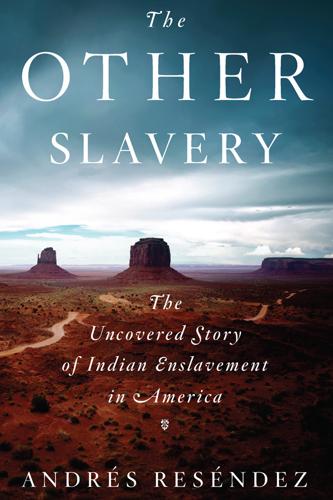
The Other Slavery: The Uncovered Story of Indian Enslavement in America
by
Andrés Reséndez
Published 11 Apr 2016
In spite of their strikingly different lifestyles, town dwellers and nomads complemented each other well. The Pueblos exchanged corn and ceramics with hunter-gatherers for bison meat and hides: carbohydrates for protein, and pottery for hides. The Spaniards’ arrival in 1598 severely reduced this trade. The Pueblos now had to surrender their agricultural surplus to encomenderos and missionaries and therefore retained few, if any, items to exchange. The archaeological record shows fewer bison bones and bison-related objects among the Pueblos during the seventeenth century. Additionally, the Spaniards launched raids against outlying hunter-gatherers, further disrupting Pueblo-Plains trading networks.
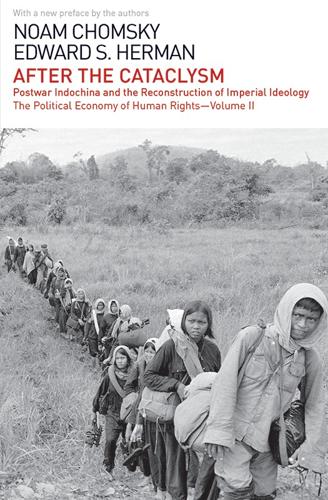
After the Cataclysm
by
Noam Chomsky
Published 17 Dec 2014
Chanda also describes the slow and careful moves that the government is making to encourage cooperation among the individualistic peasants of the Mekong Delta and to increase food production, the introduction of double harvests, and “impressive projects” to improve the land as well as efforts to develop small-scale industry to offer needed goods to the peasants so that they will agree to send the agricultural surplus to the cities. As for the corruption, described with much glee by Western journals,17 he writes that it is “in a way an inevitable phenomenon after thirty years of sacrifice and privations,” particularly in Saigon where substantial quantities of imported consumer goods are still to be found, though the government, which has quite openly discussed the problem, is taking measures to overcome it not overlooking the severe temptations for a soldier who has been fighting in the jungle for ten years and would now like to send a small present to his wife at home.

Unfinished Empire: The Global Expansion of Britain
by
John Darwin
Published 12 Feb 2013
Here the first task was to keep order in a densely layered agrarian society which piled a mountain of rent-seekers and -claimers (some absentee, some organized into powerful ‘village brotherhoods’) over the long-suffering, debt-ridden labourers in the field. The second was to collect the ‘land revenue’, the staple of Indian finance. This was the government’s share of the agricultural surplus, collected in cash, and based on its rights as the land’s ultimate owner. Much of the elite manpower of the Indian Civil Service, the Civilians, was stationed in the 250 or so districts (many with more than 1 million inhabitants) into which the provinces of directly ruled British India were divided.
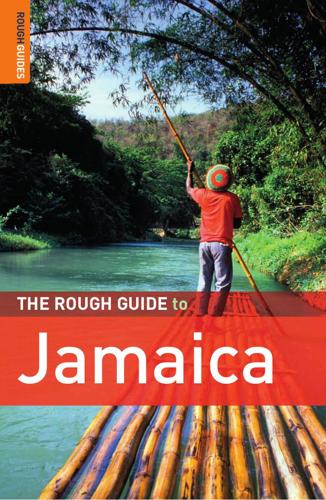
The Rough Guide to Jamaica
by
Thomas, Polly,Henzell, Laura.,Coates, Rob.,Vaitilingam, Adam.
Although remnants of the once lucrative bauxite industry are still around (in the form of massive empty factories and dried-up red mud lakes) it is agriculture that has and continues to be, despite St Elizabeth’s dry climate, the main stay of the local economy, producing most of the country’s agricultural surplus – and which is why it’s known as Jamaica’s “breadbasket”. Recently, tourism has begun to make an impact, though it is unlikely ever to approach north coast levels. The emphasis is on small-scale, community-based, environmentally friendly tourism, avoiding the disruption to traditional lifestyles that the industry has caused elsewhere on the island. 239 Southfield Pedro Cross Gutters Lovers’ Leap Pickapepper Factory Porus CARIBBEAN SEA Woman’s Point Trout Hall Frankfield Chapelton ST ANN Alligator B12 ST CATHERINE Portland Lighthouse Lionel Town Amity Hall Jackson Bay Rocky Point Carlisle Bay Alley Race Course Hayes Halse Hall May Pen Denbigh Showgrounds Cooks Gate Denbigh Milk River A2 Toll Four Gate Paths CLARENDON Thompson Town Resource Hole Plowden Gut River Alligator Long Bay Pond Farquhars Old Beach Cross Keys Spur Tree Newport MANCHESTER Mandeville Shooter’s Hill Williamsfield JSP Coffee Factory Bull Savannah Nain Port Kaiser Top Hill Junction AINS Treasure Beach Malvern Leeds A2 Braes River Wilton U NT Williamsfield Pondside Fullerswood Santa E Lacovia Cruz W Lacovia Mile Gully Spaldings Bethany Grove Place Walderston Devon Christiana Coleyville Christiana Bottom Gourie State Park Balaclava MO 10 miles Lacovia Tombstone AVE NT UZ Parottee Point Black River BOO Middle Quarters BAM ST ELIZABETH B6 Siloah Appleton Appleton Estate Retirement Maggotty The Great Morass A2 YS Falls Ipswich Auchtembeddie SA R AC 0 A2 Brompton Font Hill Beach Park Whitehouse WESTMORELAND THE SOUTH Albert Town | S T J AMES THE S OUTH 240 B5 A2 Getting around Though without the turquoise seas and white-sand beaches of the north, Jamaica’s southern coastline is among the most spectacular on the island.
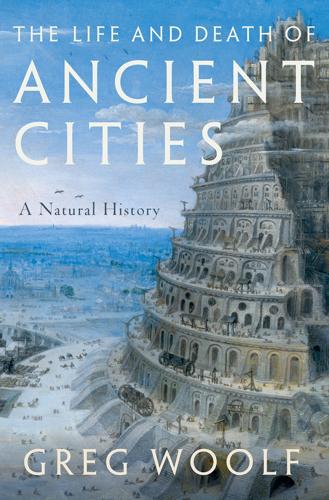
The Life and Death of Ancient Cities: A Natural History
by
Greg Woolf
Published 14 May 2020
There is unambiguous evidence of the appearance of ranked societies such as rich burials alongside poor and larger houses alongside smaller ones, and a few settlements of 10 hectares where most covered no more than a hectare. Most significant is the appearance of the “public” buildings, larger and more complex than houses, apparently nonresidential, and some containing tokens and seal stones, presumably used to manage storage and exchange. How exactly the expansion of late Ubaid style, a growing agricultural surplus, and the appearance of social ranking appear together is unclear. Was some threshold crossed beyond which egalitarian communities were unsustainable? Did a gradually expanding set of connections suddenly gel? But the trajectory is very clear. These farming societies were heading toward greater complexity.

Power and Progress: Our Thousand-Year Struggle Over Technology and Prosperity
by
Daron Acemoglu
and
Simon Johnson
Published 15 May 2023
Overall, higher productivity and lower consumption levels for most of the population brought a huge increase in the “surplus” of the English economy, meaning the amount of output, mostly food, wood, and cloth generated above the minimum level necessary for the survival and reproduction of the population. This surplus was extracted and enjoyed by a small elite. Even under the most expansive definition, this elite, including the king’s retinue, nobles, and high clergy, made up no more than 5 percent of the population. But it still captured most of the agricultural surplus in medieval England. Some of the food surplus went to support the newly burgeoning urban centers, whose population increased from two hundred thousand in 1100 to about a million in 1300. Urban living standards appear to have improved, in stark contrast with what happened in more-rural areas.

Slouching Towards Utopia: An Economic History of the Twentieth Century
by
J. Bradford Delong
Published 6 Apr 2020
Confiscate their land and animals and force them onto collective farms along with other peasants. Tighten down their standard of living, though, so it would be a little bit worse than the others. The other peasants would be happy, the party thought: only the kulaks would be upset—and their resistance could be handled. Thereafter, the entire agricultural surplus could be taken to the cities, with no need to supply the countryside with any consumer goods at all. The government was wrong. Some 94 percent of the Soviet Union’s twenty-five million peasant households were gathered into state and collective farms, averaging some fifty peasants per farm.

City: Urbanism and Its End
by
Douglas W. Rae
Published 15 Jan 2003
In addition, distance-compressing technologies are in 2003 more powerful than ever before, and in the 421 E N D O F U R B A N I S M view of many pose new threats to urbanity not heretofore seen.52 One urbanismenabling force is resurgent in the early twenty-first century, namely immigration: waves of new Americans are arriving today much as they were in 1910, and some sections of New Haven are alive with the energies they bring.53 Another of the old forces, the agricultural surplus, never went away and retains its impact worldwide. Everywhere, cities and urban agglomerations of increasing size are being created, many of them now booming far more dramatically than New Haven did a century past. There is little chance that the hard-edged features of urbanism will be restored.
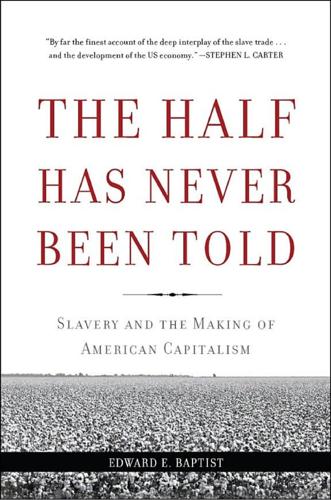
The Half Has Never Been Told: Slavery and the Making of American Capitalism
by
Edward E. Baptist
Published 24 Oct 2016
Within seven decades, Manchester factory workers running the new machines could make cloth five or ten times faster than laborers alone working by hand. A new class of factory-owning entrepreneurs emerged. They extracted massive profits from textile manufacturing, but textile revenues also boosted and transformed the entire British economy. Wealthy landowners borrowed cotton-generated investment capital and commercialized agriculture. Surplus rural laborers, pushed into factory towns, became wage-earning factory workers.7 The evidence of transformation surrounded the white customers Rachel saw in the stores. Imagine one of them, his fingers checking out one bolt of cloth after another, sensing its weight, its texture, the elaborate variety pumped out by Manchester mills and promoted in newspaper ads: “Superfine broad cloths,” “white flannels,” “Cambrick and jaconet muslins.”
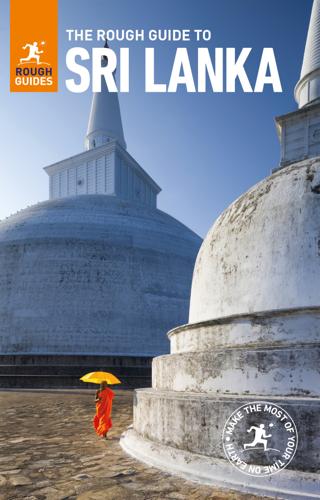
The Rough Guide to Sri Lanka
by
Rough Guides
Published 21 Sep 2018
Sri Lanka, by contrast, preserved the Theravada tradition, which it subsequently exported to Burma and Thailand, from where it spread to neighbouring countries – Buddhists in Southeast Asia still regard Sri Lanka as the guardian of the original Theravada tradition. Buddhism continued to flourish throughout the Anuradhapuran and Polonnaruwan eras. For much of this period Sri Lanka was virtually a theocracy: huge monasteries were established and much of the island’s agricultural surplus went to supporting a vast population of monks. The resources devoted to maintaining the clergy meant that the practice of begging for alms largely disappeared in Sri Lanka from an early date, while the Buddha’s traditional requirement that monks lead a wandering life in order to spread the religion was similarly ignored.
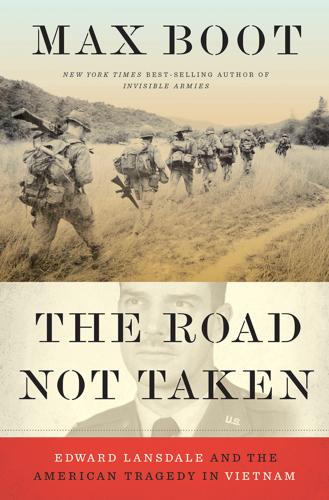
The Road Not Taken: Edward Lansdale and the American Tragedy in Vietnam
by
Max Boot
Published 9 Jan 2018
A conscientious objector, Reuter had worked during World War II for the American Friends Service Committee and after the war for CARE, a leading international charity based in New York. In 1962, he had been appointed by President Kennedy as director of Food for Peace, an eight-year-old agency created to send some of America’s agricultural surplus to needy nations. While Lansdale, a career military man, and Reuter, a career aid worker, came from very different backgrounds, they shared a similar vision of promoting “civic action” to stymie Communist subversion. Upon hearing that Lansdale was being forced out of the Pentagon, Dick Reuter offered him a job at Food for Peace working on long-range planning, and Lansdale accepted.
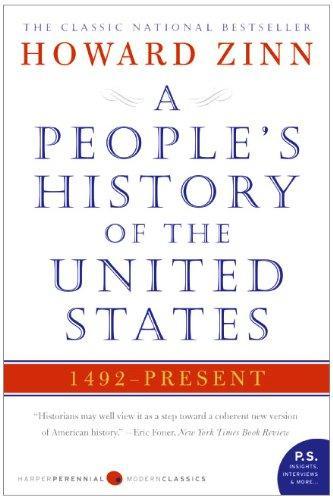
A People's History of the United States
by
Howard Zinn
Published 2 Jan 1977
Oil was now second to cotton as the leading product sent overseas. There were demands for expansion by large commercial farmers, including some of the Populist leaders, as William Appleman Williams has shown in The Roots of the Modern American Empire. Populist Congressman Jerry Simpson of Kansas told Congress in 1892 that with a huge agricultural surplus, farmers “must of necessity seek a foreign market.” True, he was not calling for aggression or conquest—but once foreign markets were seen as important to prosperity, expansionist policies, even war, might have wide appeal. Such an appeal would be especially strong if the expansion looked like an act of generosity—helping a rebellious group overthrow foreign rule—as in Cuba.

The Rise and Fall of the Great Powers: Economic Change and Military Conflict From 1500 to 2000
by
Paul Kennedy
Published 15 Jan 1989
The resultant surge in output has caused one scholar to argue that “France, more than Britain and far more than America, became the arsenal of democracy in World War I.”213 Yet this top-heavy concentration upon armaments output—increasing machine-gun production 170-fold, and rifle production 290-fold—could never have been achieved had France not been able to rely upon British and American aid, which came in the form of a steady flow of imported coal, coke, pig iron, steel, and machine tools so vital for the new munitions industry; in the Anglo-American loans of over $3.6 billion, so that France could pay for raw materials from overseas; in the allocation of increasing amounts of British shipping, without which most of this movement of goods could not have been carried out; and in the supply of foodstuffs. This last-named category seems a curious defect in a country which in peacetime always produced an agricultural surplus; but the fact was that the French, like the other European belligerents (except Britain), hurt their own agriculture by taking too many men from the land, diverting horses to the cavalry or to army-transport duties, and investing in explosives and artillery to the detriment of fertilizer and farm machinery.

Nixonland: The Rise of a President and the Fracturing of America
by
Rick Perlstein
Published 1 Jan 2008
His sincerity and charm weren’t enough, in 1960, to bump him up to the Senate against Karl Mundt. President Kennedy felt guilty for his lack of coattails and tapped the now unemployed McGovern to set up the Food for Peace program, a scheme to strengthen Cold War alliances by distributing America’s agricultural surplus. It suited his idealistic faith in the power of government to do good. He had learned about hunger in the Depression, witnessing the dust bowl firsthand; it was “the first day I knew that big men cried.” He won the Senate seat he coveted in 1962, then in 1963 became the first member to speak against the gathering U.S. involvement in Vietnam.